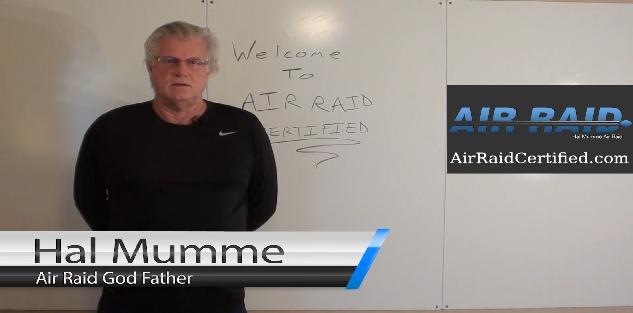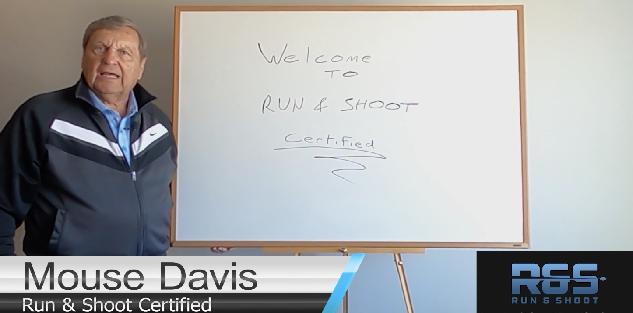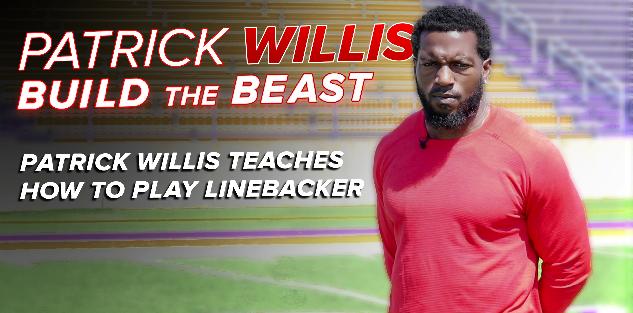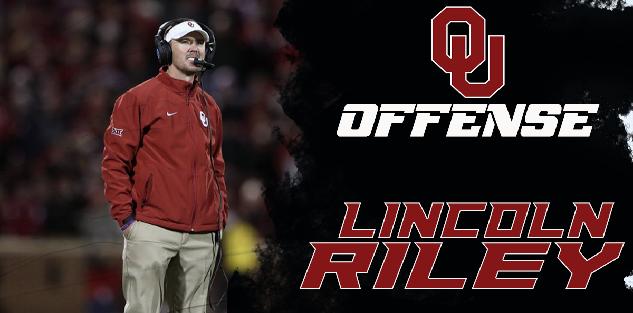Featured courses
- Jim Thorpe Award Winner Jahdae Barron’s 4 Drills for Dominating Receivers by Grant Young
- 5 Tips to Improve Your Football Game Plan by Andrew Dohre
- Game Changer RPO Football : Wing-T Offense by Andrew Dohre
- Mastering the Pass Rush: Expert Drills and Progression Tips from UCLA’s Coach Ikaika Malloe by Andrew Dohre
- 3 SPO’s to Protect the Passing Game and create opportunities in space by Keith Grabowski
- The Art of Running the Corner Route- Coaches and Players Prespectives by CoachTube Staff
- Evolve your Defense with Quarter, Quarter Half to Stop RPO by Coach Grabowski
- Top 10 College Football Players to Watch for in 2022 by Alec Burris
- Clemson vs. Syracuse Matchup of the Week by Keith Grabowski
- Sprint Out Passing: Move the Pocket for Success by Keith Grabowski
- Unlocking the True Potential of Your Special Teams Play by Keith Grabowski
- The Most Important Components of Air Raid by Keith Grabowski
- 4 Plays that Benefit from Bunch Formations by Keith Grabowski
- 3 Third Level RPOs for Explosive Plays by Keith Grabowski
- The Role of the Screen Game in Explosive Offense by Keith Grabowski
- The Chess Match: Win on the Perimeter (Part 1) by Coach Grabowski
- Unlocking the Power of Gap Manipulation to Limit Explosive Plays by Keith Grabowski
- TCU’s 3-3-5 and facing bigger personnel by Keith Grabowski
- Elevating Your Team: Strategies from Coach Matt Ruhle by Keith Grabowski
- 7 RPO’s for your playbook by Coach Keith
- Beyond Quarters - The Need For Additional Coverage Concepts by Keith Grabowski
- 5 Core Offensive Priniciples for a Winning Football Formula by Keith Grabowski
- Win Downfield - Attacking Different Areas Deep with 3rd Level RPO by Coach Grabowski
- WAKE FOREST’S UNIQUE RPO GAME by Keith Grabowski
- Adjustments to Defeat the Tite Front by Keith Grabowski
- Attack Defenses with The Versatile Y-Cross Concept by Keith Grabowski
- Play Action is a Cheat Code! - 5 Play Action Concepts to Increase Your Expected Points by Keith Grabowski
- Question from Rutgers OC - What does your offense say about your coaching? by Keith Grabowski
- Gap Schemes vs. Tight Fronts, Play Action Shots and Misdirection by Coach Grabowski
- Setting up your young Qb for success by Keith Grabowski
- The Hot Gap plus 3 Gap Scheme RPO’s to Stress the Defense by Keith Grabowski
- How Football Coaches Can Build A Game-Changing Special Teams Unit by Grant Young
- Master the Art of Quick Passing for High Completion Percentages by Keith Grabowski
- How to Be an Influential Football Coach by Grant Young
- How to Maximize Tackling Efficiency within Scheme by Keith Grabowski
- Offensive Drills of the Week by Keith Grabowski
- How a Stoplight Can Make Your Fly Sweep Takeoff by Keith Grabowski
- Keep your Drills Fresh and Your Skills Developing - Offense by Keith Grabowski
- Coach Kevin Kelley, Outside The Box by Keith Grabowski
- Want your defense to get off the field after third down? Sims and Creepers are the answer! by Keith Grabowski
- Create More Turnovers with Circuit Training & Win More Games! by Keith Grabowski
- Devastate the Defense with TE RPOs by Keith Grabowski
- Red Zone adjustments by Keith Grabowski
- CoachesClinic.com Featured Matchup: Cincinnati vs Indiana by Caleb Hopkins
- 3 NFL ZONE RUN PLAYS FROM WEEK 7 by Alex Kirby
- Sonny Dykes Teaches You How to Put Together an Offense by Coach Grabowski
- FIVE REASONS TO RUN THE 3-3 DEFENSE by Alex Kirby
- Getting Your Defense Ahead - 1st and 2nd down Pressures from Noah Joseph by John Grayson
- Chad Morris Teaches How To Builds an Offense by Coach Grabowski
- Get Your Offense a +1 With the QB Run Game by Coach Grabowski
- Are You Causing a 14 Point Turnaround...Against Your Team? by Coach Grabowski
- Learn How to Improve Your Offense with USC’s “Harrell Effect” by Coach Grabowski
- The Power of Influence - Rick Jones, Mizzou by Coach Grabowski
- Easy QB Runs to Drive Defenses Crazy by Ryan Eisenberger
- How many different ways can you make the defense cover everyone? by Ryan Eigenberger
- Win Passing Downs with Creepers and Sims by Coach Grabowski
- Always have a plan to play your best 11 by Keith Grabowski
- Dominate the Defense with Double Teams by Coach Grabowski
- Buffalo OC teaches his model for game planning by Keith Grabowski
- Put your 3 Deep Coverage in a Better Position with Zone Alert Rotations by Coach Grabowski
- 5 Keys to Using Trick Plays by Coach Grabowski
- Learn from 'Juggernaut' Offense by Keith Grabowski
- Bob Wylie - Offensive Line Breakdowns by Coach Grabowski
- Utilizing the Hybrid Linebacker to take away Offensive Advantages by Coach Grabowski
- Always have a plan to play your best 11 by Keith Grabowski
- Coachesclinic.com Featured Matchup: #6 Oklahoma vs #21 Texas by Caleb Hopkins
- Easy for You - Difficult for Them Adjustments by Keith Grabowski
- Coachesclinic.com Featured Matchup: Davidson College vs Presbyterian by Caleb Hopkins
- Week 5 National High School Football Rankings by Keith Grabowski
- Protecting Aaron Rodgers (and your own QB) by Caleb Hopkins
- Defensive Drills of the Week by Keith Grabowski
- Woo Pig - Add a wrinkle with these Arkansas Downhill Run Variations by Keith Grabowski
- Coachesclinic.com Featured Matchup: #7 Cincinnati vs #9 Notre Dame by Caleb Hopkins
- Offensive Drills of the Week by Keith Grabowski
- Coach Jason McEndoo Teaches #12 Oklahoma State’s Top Running Play by Keith Grabowski
- Adjustments - Attach Screens to your best plays, defend star receivers, & movement to stop the run by Keith Grabowski
- Coachesclinic.com Featured Matchup: Army vs #16 Wake Forest by Caleb Hopkins
- How To Implement A Running-Back-By-Committee Scheme by Brandon Ogle
- How To Become The Most Feared Offensive Lineman In Your League by Chrisian Benavides
- Wylie, McNally and Alexander Key Coaching Points on the Wide Zone Play by Keith Grabowski
- #21 Coastal Carolina’s play that is a whole offense within itself by Keith Grabowski
- 4 Plays that Benefit from Bunch Formations by Keith Grabowski
- Best Mesh Concept Plays by Ron McKie
- Forming Families For Football by Darryl Page
- Top 5 Things Coaches Should Strive To Get Out Of Spring Camp by Darryl Page
- 10 Tips To Know Before Attending Football Camps by James Breland
- Offensive Line Drills by Rick Bouch
- You’re a captain, now what? 5 Tips to bring your team together and establish yourself as a true leader by Lester Crafton
- COACHING THE 4-2-5 DEFENSE VS SPREAD TEAMS by Alex Kirby
- Gifts From Grinch by Coach Grabowski
- A Package to Help You Win Mid to Late Season by Coach Grabowski
- The Future of American Football: How to Run the Spread Offense by Coach Scott
- Chris Ash teaches Longhorn Tackling by Coach Grabowski
- The misunderstood Yet Powerful Run Scheme - Duo by Coach Keith
- THE GUS MALZAHN QUARTERBACK COUNTER PLAY by Alex Kirby
- FIVE TIPS FROM GUS MALZAHN ON HOW TO BUILD YOUR PLAYBOOK by Alex Kirby
- LITTLEST KID ON THE FIELD TRUCKS LINEMAN – YOU CAN’T MAKE THIS STUFF UP by Jacob
- HOW TO MAXIMIZE YOUR OFFSEASON FOOTBALL TRAINING by Dominic
- BAD CALL, GREAT COACH: THIS IS WHY PLAYERS LOVE PETE CARROLL by Jacob
- How to Get Recruited for Collegiate Sports by Brandon Ogle
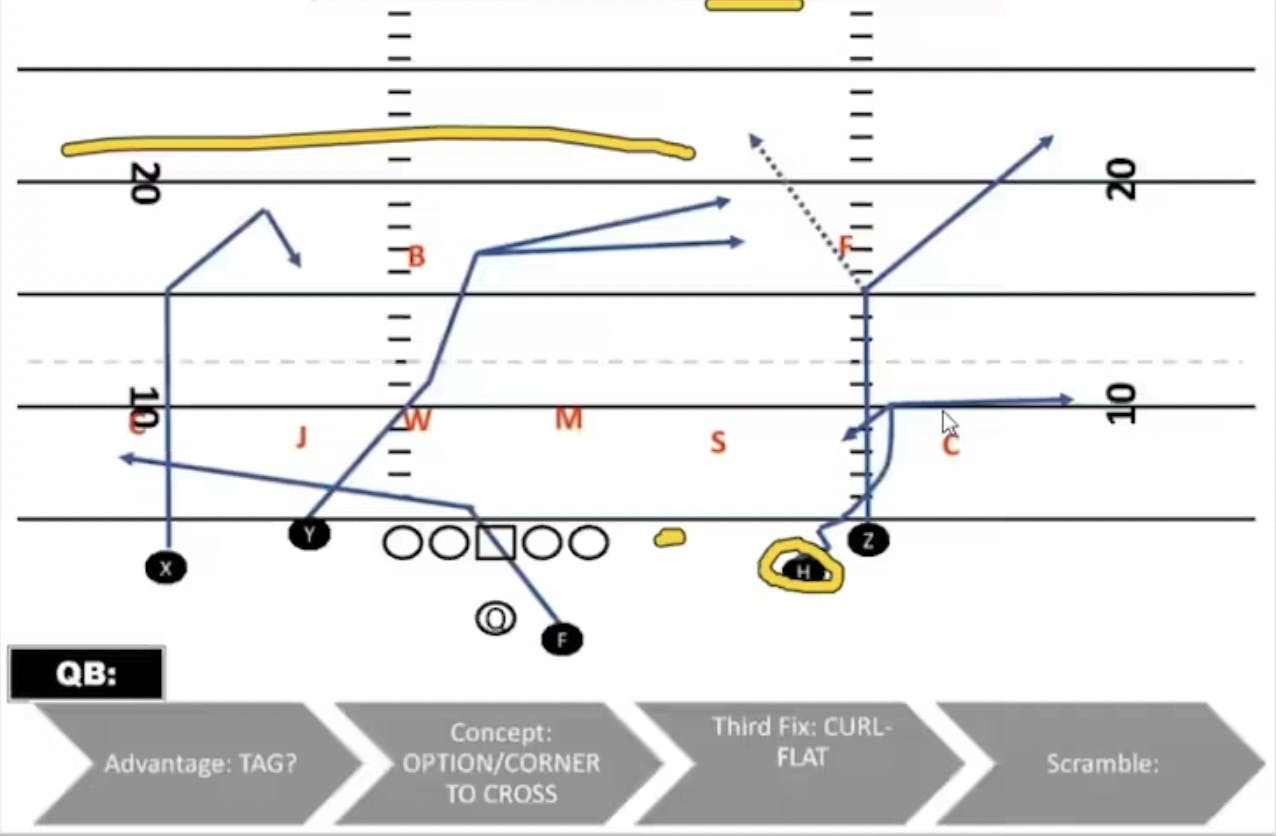
Attack Defenses with The Versatile Y-Cross Concept
The Y-Cross concept is a staple of the Air Raid offenses, dating back to the days of LaVell Edwards at BYU and refined over the years by coaches such as Hal Mumme and Mike Leach.ed over the years by coaches such as Hal Mumme and Mike Leach. This concept involves a deep route or routes to occupy the safeties, and a crossing or over route from either a tight end or a slot receiver. The QB takes a quick look first at the deep route (or combination to the side the cross is being run to, to find an easy throw or a rhythm shot, then works to the primary route, which is the crossing route.
While it has its roots in the Air Raid offense, the Y-Cross can be found in all styles of offense playbooks.
Its versatility in application from a variety of formations allows it to be dressed up in a number of different ways while also being an effective play-action concept.
What it does is create an oblique stretch of the defense with what becomes a three-level flood concept.
While many early iterations had the tight end or “Y” running the cross, it has application for speedy receivers and has become a favorite of the Kansas City Chiefs-skills">receivers and has become a favorite of the Kansas City Chiefs with the different dynamic slot receivers who were or are a part of their offense.
In addition, the ability to utilize the personnel available makes this a multi-purpose concept that can attack a number of coverages. Packaged correctly with other route combinations, it can be designed and utilized to beat any coverage.
Let’s take a look at both the basics of the route as well as how coaches are utilizing the Y-Cross in different ways within their offenses.
History of the Y Cross
It’s always good to understand how a concept came into use as well as how it has evolved and adapted to attack the defense. Loren Endsley does a great job sharing the history of the play and how it has evolved in this video:
Benefits of the Y Cross
Three receivers attacking a weakside zone
A horizontal and vertical stretch of the defense
Can attack any coverage
Simple read for QB and allows for a scan across the defense which puts his eyes ahead of windows to see defenders and danger
Can be used with a variety of formations and personnel
Easily tagged to create multiple looks and issues for a defense
Basics
This concept gets some of your best-skill players on the move looking to create big plays down the football field. The core of this concept is the post, crosser, and running back or receiver stretching the flat to the boundary. On the frontside, teams are able to tag a variety of routes/combinations that give the QB decision-making power within his progression, such as the smash concept.
This is another great horizontal pass concept that gets skilled players on the move across the middle of the field and adds another layer to the passing attack, similar to the Shallow Cross concept.
Why it Does Well Against Various Coverages
Man Coverage- Man coverage is beaten primarily by routes running away from defenders. The post or mandatory outside release Go route to the weak side provide good man-beating options, and the crosser runs away from the defender as well. When that crosser is a receiver like Tyreek Hill, it’s even better!
Cover 4 - Against quarters with play action, the safety is usually responsible for a boundary run fit. The Post can be run from the boundary to attack that are over the safety who is reacting down toward the line of scrimmage
Defenses tend to include their boundary-free safety in the fun fit in cover 4. This creates the potential for the post-route runner to win over the top of the defense.
Cover 3 - ttps://throwdeeppublishing.com/blogs/football-glossary/what-is-cover-3-in-football">Cover 3 - The three-level stretch makes this difficult for the flat defender. Essentially a high-low stretch is created on him.
Applications and Ideas
Lincoln Riley, Head Coach, USC
Y-Cross is versatile because of the numerous ways that the play can be designed. For instance, Riley illustrates a version in which the front side of the progression can be any quick game concept that clears out space for the Y-Cross.
The base install for Oklahoma is vertical by #1 and a speed out by #2. In his clinic talk, Riley shows multiple examples of different quick game concepts that OU has used. Because the play is versatile by design, it lends itself to be effective in many formations and personnel groupings to fit the players that are on the field. Although its base install is from 10 personnel, Coach Riley has utilized 20 and 21 personnel groupings with this concept and loves play-action for an extra element of explosion.
Coaching Points
It is vital that the receivers, no matter the formation or personnel, understand their role within the progression.
Read #1- The quick game concept with Y-Cross has to know that they cannot work their release for too long. They are the first read, and they must clear out for the Cross. If they take too long working a release, they will take themselves and the Cross out of the play. If the QB likes a matchup to the quick game concept, he can take the throw now.
Read #2- The Y must have the most “feel” of any receiver to run this route. He has to be able to feel the defense and find open grass. This could mean stair-stepping more vertically against underneath coverage, snapping flat across the field in front of deeper coverage, or sitting down the crossing route to avoid running into coverage.
Read #3- The curl route on the backside of the play must also understand the progression. However, this time, it is because this route can be patient and work a release since it is the final option. Getting open too quickly can be just as bad as not getting open at all.
Here is Coach Riley explaining the basics of the Y-Cross as he applies it.
The Y-Cross is a great all-purpose route for any offense. It allows for versatility in how it is utilized and in doing so can create the opportunity for both easy throws as well as built-in pressure or hot throws while still giving the offense the opportunity to hit an intermediate route and take a chunk out of the defense. In this example, Lincoln Riley shows how the Y runs the route in order to protect the throw:
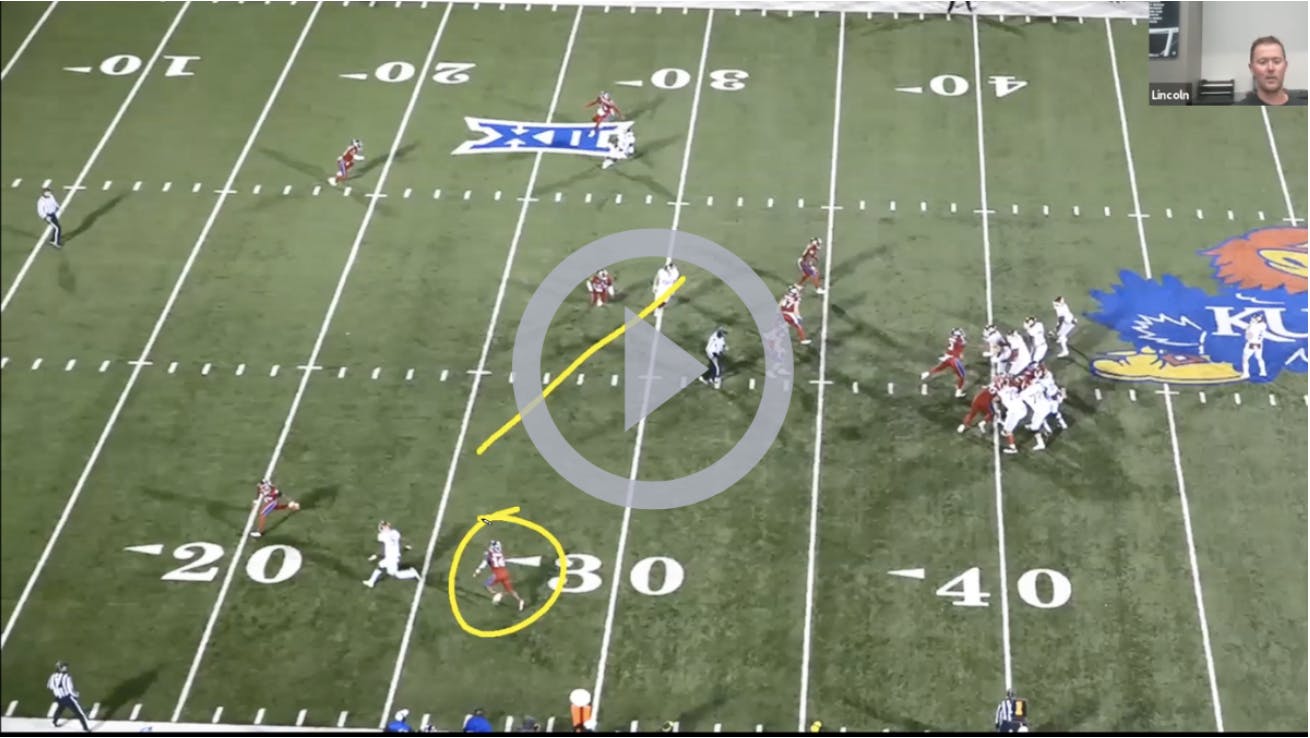
Jason Mohns - TE Coach, Arizona State
For Jason Mohns, 7x state champion at Saguaro HS(AZ) and now the TE Coach at Arizona State, the Y-Cross is a play-action concept installed out of 2x2, but they have 3x1 versions as well. In his variation of Y-Cross he utilizes a “back out bubble” with a mandatory outside release go by the X receiver on the boundary. The play action draws the linebackers down allowing space for the crosser to be open. The QB progresses from the Go and Bubble to the Cross as he explains in the video:
Josh Herring - Offensive Coordinator, Jones County HS (GA)
Josh Herring likes Y Cross as a backside tag. For example, it can be paired with a dropback like the Smash route. In his concept which he calls “Goofy,” the smash is utilized from sa compressed set with the Crosser coming into a void if the corner and flat get covered.
Whether it’s Y-Cross or another route concept, finding those routes that can have multiple uses in personnel, formations, and play action as well as drop back give you an advantage in getting the concept better and better over the course of the install and the season because it gets a lot of reps for the quarterback and receivers.

